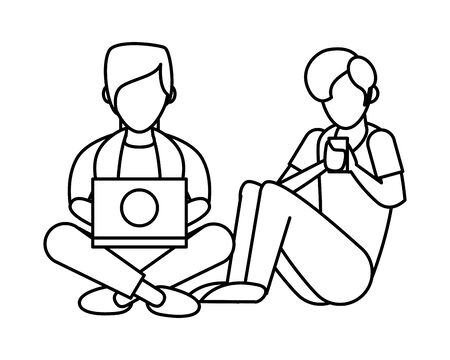Introduction to Manual Therapy in British Physiotherapy
Manual therapy stands as a cornerstone within British physiotherapy, representing a hands-on approach to assessing, diagnosing, and treating musculoskeletal disorders. Practised widely across the United Kingdom, manual therapy involves skilled movements and manipulations applied by physiotherapists to joints, muscles, and soft tissues. This therapeutic method is highly valued for its ability to relieve pain, restore movement, and promote optimal function in patients of all ages. Over the decades, manual therapy has evolved significantly in British clinical practice, shaped by both historical traditions and modern research. Its enduring significance lies in its adaptability to individual patient needs and its integration with evidence-based care—principles that are central to UK physiotherapy values. As we explore the evolution of manual therapy in Britain, it becomes clear how this approach has not only influenced patient outcomes but also contributed to the professional identity of physiotherapists throughout the country.
2. Historical Foundations: Origins and Early Practices
The roots of manual therapy in British physiotherapy can be traced back to the late 19th and early 20th centuries, an era marked by both innovation and adaptation. During this formative period, several key figures shaped the profession’s approach to hands-on techniques, drawing inspiration from various disciplines and laying the groundwork for modern practice.
Key Historical Figures in British Manual Therapy
| Name | Contribution | Era |
|---|---|---|
| Sir Charles Sherrington | Pioneered research on neuromuscular function, influencing therapeutic touch. | Early 1900s |
| Mary McMillan | First Chartered Society of Physiotherapy (CSP) president, advocated for integration of manual methods. | 1920s |
| James Cyriax | Developed orthopaedic medicine concepts, emphasising soft tissue manipulation. | Mid-1900s |
The Early Techniques: Massage and Manipulation
Manual therapy in the UK initially centred around massage, influenced by European traditions. Swedish massage, introduced in Britain in the late 1800s, became a mainstay in hospitals and rehabilitation settings. As physiotherapists gained greater autonomy, joint mobilisation and manipulation began to supplement massage, providing new avenues for pain relief and functional recovery.
The Influence of Osteopathy and Massage on British Practice
Osteopathy, founded by Andrew Taylor Still in the United States, made its way to Britain in the early 20th century. Its emphasis on spinal alignment and holistic health resonated with forward-thinking physiotherapists seeking to broaden their therapeutic repertoire. This cross-pollination between osteopathy and physiotherapy led to a richer array of manual techniques within British clinical practice. Simultaneously, formal training courses in medical massage were established by organisations such as the CSP, standardising approaches and ensuring safe practice.
A Summary of Early Manual Therapy Approaches in the UK
| Technique | Description | Main Usage Period |
|---|---|---|
| Swedish Massage | Smooth strokes and kneading movements for muscle relaxation and circulation. | Late 1800s–Present (evolving) |
| Joint Mobilisation | Gentle oscillatory movements to restore joint motion. | Early 1900s onwards |
| Manipulation (Osteopathic Influence) | High-velocity thrusts applied to joints, particularly the spine. | 1920s onwards (gradual adoption) |
The historical foundations of manual therapy in British physiotherapy reflect a dynamic interplay between tradition and innovation. Through the contributions of pioneering practitioners and the integration of diverse therapeutic philosophies, manual therapy has evolved into an essential component of modern care across the UK.

3. The Rise of Manual Therapy in the NHS Era
The establishment of the National Health Service (NHS) in 1948 marked a pivotal chapter for physiotherapy and manual therapy across Britain. As healthcare became universally accessible, the demand for effective, hands-on interventions grew rapidly. Physiotherapists were increasingly called upon to manage musculoskeletal conditions, rehabilitation needs, and chronic pain, cementing manual therapy’s place within mainstream clinical practice.
Integration into the NHS
Manual therapy was gradually woven into NHS treatment protocols as physiotherapists demonstrated its value in improving patient mobility and reducing recovery times. This integration was supported by growing clinical evidence and positive patient outcomes, which encouraged NHS trusts and health authorities to invest in specialist training and facilities dedicated to manual techniques.
Development of Professional Bodies
The growth of manual therapy within the NHS coincided with significant developments in professional governance. The Chartered Society of Physiotherapy (CSP), established earlier in 1894, played a crucial role during this era by advocating for higher standards and representing practitioners’ interests at both governmental and educational levels. Subgroups such as the Manipulation Association of Chartered Physiotherapists (MACP) emerged, providing focused leadership on advanced manual therapy skills, research, and continuing professional development.
Evolving Training Standards
As manual therapy became more integral to physiotherapy services, there was a concerted effort to standardise education and training. Universities introduced structured postgraduate programmes specialising in manual techniques, ensuring physiotherapists developed both theoretical understanding and practical expertise. Ongoing assessment, mentorship schemes, and competency frameworks were established to maintain high standards across the profession. This commitment to rigorous training not only elevated the reputation of British physiotherapists but also ensured that patients received consistent, evidence-based care throughout the country.
4. Contemporary Approaches: Techniques and Evidence-Based Practice
The landscape of manual therapy within British physiotherapy has undergone significant transformation, particularly in the last two decades. Today, contemporary approaches are rooted in evidence-based practice, ensuring interventions are both safe and effective for a wide range of musculoskeletal conditions. Physiotherapists across the UK now blend traditional hands-on techniques with modern scientific understanding, following guidance from authoritative bodies such as the Chartered Society of Physiotherapy (CSP) and the National Institute for Health and Care Excellence (NICE).
Key Manual Therapy Techniques Used in the UK
| Technique | Description | Common Indications |
|---|---|---|
| Joint Mobilisation | Gentle, passive movements applied to joints to restore mobility. | Osteoarthritis, spinal stiffness, post-injury recovery |
| Soft Tissue Manipulation | Hands-on techniques targeting muscles and fascia to reduce tension and promote healing. | Sports injuries, muscle strain, chronic pain syndromes |
| Spinal Manipulation | High-velocity, low-amplitude thrusts applied to spinal segments. | Acute low back pain, neck pain (where clinically indicated) |
| Myofascial Release | Sustained pressure and stretching of connective tissue to improve flexibility. | Fibromyalgia, postural dysfunction, scar tissue management |
| Neurodynamic Techniques | Mobilising neural tissues to alleviate nerve-related symptoms. | Sciatica, carpal tunnel syndrome, nerve entrapments |
The Role of Evidence-Based Practice in Modern Manual Therapy
The integration of research findings into clinical decision-making is now a cornerstone of British physiotherapy. Current clinical guidelines emphasise that manual therapy should not be used in isolation but rather as part of a holistic rehabilitation plan incorporating exercise and patient education. Recent studies have shown that while manual therapy can provide short-term relief for conditions such as lower back pain or shoulder dysfunction, long-term outcomes are optimised when combined with active interventions.
Key Recommendations from Clinical Guidelines:
- NICE: Recommends manual therapy only alongside exercise for persistent low back pain.
- CSP: Encourages clinicians to consider patient preferences and functional goals when selecting manual therapy techniques.
- NHS Trusts: Highlight the importance of regular reassessment and outcome measurement to ensure ongoing efficacy.
A Patient-Centred Approach
The contemporary British model places patients at the heart of their care. Physiotherapists engage in shared decision-making, discussing expected benefits and potential risks of manual therapies. This collaborative approach respects patient values and ensures treatments align with individual lifestyle needs—reflecting the evolution from prescriptive methods to partnership-driven care in UK physiotherapy practice.
5. Patient-Centred Care and the Role of Manual Therapy
Within British physiotherapy, the evolution of manual therapy has been closely linked to a growing emphasis on patient-centred care. This approach recognises the individuality of each person seeking treatment, moving beyond a one-size-fits-all method to prioritise patient preference, collaborative goal-setting, and culturally appropriate care.
Highlighting Patient Preference
Modern British physiotherapists place a strong focus on understanding what matters most to their patients. Whether it is hands-on manual therapy or a combination of approaches, practitioners actively listen to patients’ experiences, expectations, and concerns. This dialogue ensures that treatment plans are not only clinically sound but also personally meaningful, empowering patients in their own recovery journeys.
Collaborative Goal-Setting
Collaborative goal-setting has become a cornerstone of physiotherapy practice in the UK. Rather than dictating objectives, therapists work alongside patients to establish realistic and relevant goals, ensuring that manual therapy interventions are tailored to support these aims. This partnership fosters trust and motivation, leading to improved adherence and better overall outcomes.
Culturally Appropriate Care
The diversity within British society means that physiotherapists must be attuned to cultural beliefs and practices that may influence treatment preferences or expectations. By integrating cultural competence into manual therapy practice, British physiotherapists demonstrate respect for each patient’s background, ensuring care is accessible and acceptable for all. This commitment underpins both ethical standards and the wider NHS values of equality and inclusivity.
The Modern Role of Manual Therapy
Today, manual therapy is delivered as part of a broader biopsychosocial framework. It remains a valued tool within the therapist’s repertoire—used judiciously in response to evidence, patient input, and individual need. By embedding manual therapy within a patient-centred paradigm, British physiotherapists continue to evolve their practice while honouring the core principle: putting people at the heart of care.
6. Challenges and Future Directions
The landscape of manual therapy in British physiotherapy is constantly evolving, shaped by a complex interplay of clinical evidence, professional debates, and regulatory frameworks. As the profession moves forward, several key challenges and opportunities must be addressed to ensure manual therapy remains an integral, evidence-based component of physiotherapy practice in the UK.
Ongoing Debates and Professional Dialogue
Within the British physiotherapy community, ongoing debates persist regarding the precise role of manual therapy. While some clinicians advocate for its centrality in musculoskeletal care, others argue for a more measured approach, emphasising exercise and self-management strategies. These discussions reflect both the diversity of patient needs and the importance of personalised care. Engaging in robust professional dialogue ensures that manual therapy techniques are integrated thoughtfully alongside other therapeutic interventions.
Regulatory Considerations
Manual therapy practice in the UK is subject to clear professional standards set by bodies such as the Health and Care Professions Council (HCPC) and Chartered Society of Physiotherapy (CSP). Practitioners must demonstrate ongoing competence through continuing professional development and adherence to evidence-based practice guidelines. Recent years have seen increasing emphasis on transparency, informed consent, and patient safety—factors that influence how manual therapy is delivered across NHS and private settings alike.
Scope of Practice
The scope of manual therapy continues to evolve in response to new research findings and changing population health needs. It is crucial that practitioners remain vigilant about their legal and ethical responsibilities, particularly when introducing novel techniques or integrating complementary approaches. Ongoing collaboration between regulatory authorities, academic institutions, and frontline clinicians will help clarify best practices for safe, effective manual therapy delivery.
Potential Directions for the Future
Looking ahead, there are significant opportunities to enhance the quality and impact of manual therapy within British physiotherapy. Greater investment in clinical research will help refine treatment protocols, while technological advancements—such as digital assessment tools—may offer innovative ways to support patient care. Additionally, expanding interprofessional collaboration can foster holistic approaches that place patients at the centre of their rehabilitation journey.
Embracing Innovation While Honouring Tradition
Ultimately, the future of manual therapy in British physiotherapy lies in balancing respect for established traditions with openness to innovation. By remaining responsive to emerging evidence, regulatory developments, and patient feedback, physiotherapists can continue to deliver compassionate, effective care that meets the evolving health needs of communities throughout the UK.

